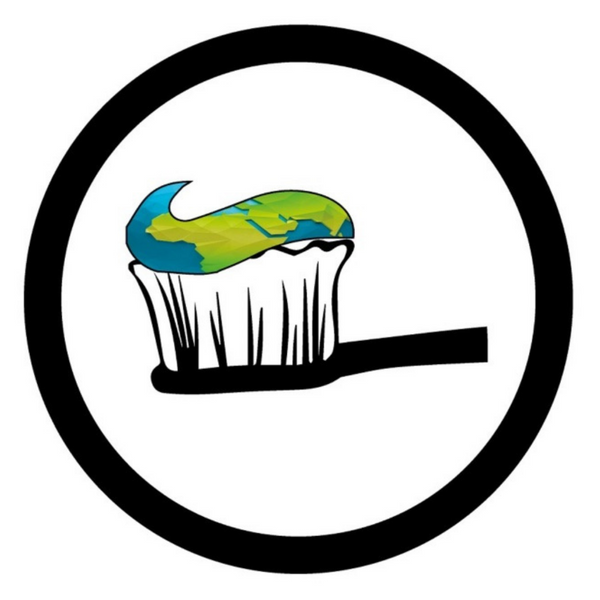Just like there are different types of toothbrushes available, there are also numerous types of toothpaste on the market, each with their own purpose, for example fluoride toothpaste, whitening toothpaste and children’s toothpaste. But before we look at these in more detail, it’s essential that you understand why toothpaste is so important for your health.
Why is Toothpaste Important?
In short, toothpaste is an essential part of your daily oral hygiene routine and without it, can cause a number of dental problems, from mild to pretty serious.
Regularly brushing your teeth with a dentist-approved toothpaste will help scrub away plaque and any food particles from your teeth, preventing the formation of cavities and gum disease. Also, many toothpastes contain fluoride, which works to strengthen tooth enamel and prevent tooth decay. Toothpaste is also essential for maintaining fresh breath as it contains ingredients like mint or other flavourings that leave the mouth feeling clean and fresh.
 Learn more about the importance of your oral health here.
Learn more about the importance of your oral health here. What is the History of Toothpaste?
Interestingly, toothpaste has been essential for dental hygiene for thousands of years, with evidence of early oral hygiene practices found in ancient civilizations. Let’s take a look at this timeline:
-
Ancient Egyptians (around 5000 BC) - Initial forms of toothpaste were used in ancient Egypt whereby the Egyptians used a mixture of powdered ashes from substances like ox hooves, burnt eggshells, myrrh, and pumice to create a paste for cleaning their teeth.
-
Arabic Influence (8th-15th centuries) - The Middle Ages saw Arab physicians making significant contributions to dental hygiene by using powders made from materials like burnt shells, myrrh, and powdered rose petals to act as toothpaste.
-
Europeans (17th Century) - In the 17th century, Europeans began using tooth powders made from a combination of crushed seashells, bones, and various herbs, flavoured with mint or cinnamon to improve the taste.
-
19th-century - In the 1800s, toothpaste started to be commercially produced. In 1824, a dentist named Dr. Peabody introduced a more modern toothpaste made from soap and chalk. In the 1850s, Dr. Washington Sheffield developed the first toothpaste in a collapsible tube.
- 20th-century - Throughout the 20th century, toothpaste manufacturers introduced a variety of tasty flavours, such as spearmint, peppermint, and fruit, to make brushing a more enjoyable and comfortable experience. Additionally, advancements in technology and research led to the development of toothpaste for specific needs, such as sensitivity or whitening.
So, now we know why toothpaste is so important and how developments have led us to where we are now, let’s discover the different types & how they address specific oral health needs.
Here are 4 main types of toothpastes on the market today:
- Fluoride toothpaste
- Whitening toothpaste
- Sensitive toothpaste
- Tartar control toothpaste
1. Fluoride Toothpaste
Fluoride toothpaste is the most common type of toothpaste around, with approximately 500 million people using fluoride toothpaste everyday worldwide. That’s a LOT of people!
But What is Fluoride Toothpaste Exactly?
In short, fluoride toothpaste is normal toothpaste which contains fluoride as its key active ingredient. Fluoride is super beneficial for tooth health as it works by remineralising the tooth enamel, making it more resistant to acid attacks from plaque bacteria and sugars. Additionally, it helps prevent the formation of cavities and can even reverse early stages of tooth decay. Learn more about the benefits of using fluoride toothpaste here.
Although some have their doubts about the safety of fluoride in toothpaste, it is completely safe to use as long as it is used correctly and in necessary doses
At Brush Fresh, all of our toothpaste tablets contain fluoride, which are not only super effective in cleaning your teeth, but they are also environmentally friendly… it's a win-win.
2. Whitening Toothpaste
This type of toothpaste is especially formulated to aid the removal of surface stains and lighten the colour of your teeth. Granted it can’t completely change the natural colour of your teeth, but it can effectively reduce the appearance of stains and enhance the brightness of your smile. Compared to other methods of teeth whitening, using whitening toothpaste is a much less abrasive and less expensive method.
At Brush Fresh, our new range of fluoride charcoal toothpaste tablet products, are providing an eco-friendly alternative to conventional toothpaste products. These fluoride toothpaste tablets are family-friendly, sustainable, and contain ingredients to aid with enhanced stain removal and teeth whitening.
3. Sensitive Toothpaste
As it says in the name, sensitive toothpaste is specially designed for those who experience tooth sensitivity to hot, cold, or sweet sensations. Sensitive toothpaste typically contains ingredients that help desensitise the teeth and reduce discomfort, like potassium nitrate or strontium chloride. These agents work by either blocking the nerve endings in the teeth or by forming a protective layer over the exposed dentin, which is the sensitive layer below the tooth enamel.

It’s important to note that sensitive toothpaste should be used in conjunction with a soft-bristle toothbrush and gentle brushing techniques to ensure there is no worsening of tooth sensitivity and/ or gum irritation.
4. Tartar Control Toothpaste
This type of toothpaste is specifically formulated to help prevent the formation of tartar, also known as dental calculus, on the teeth. Tartar is a hardened form of plaque that can buildup on the teeth and contribute to oral health issues.
Tartar control toothpaste generally contains ingredients like pyrophosphates or zinc citrate to help reduce tartar formation. While tartar control toothpaste can help prevent tartar formation, it cannot remove existing tartar. This must be left to dentists or dental hygienists who can perform professional dental cleanings to effectively remove tartar buildup.

